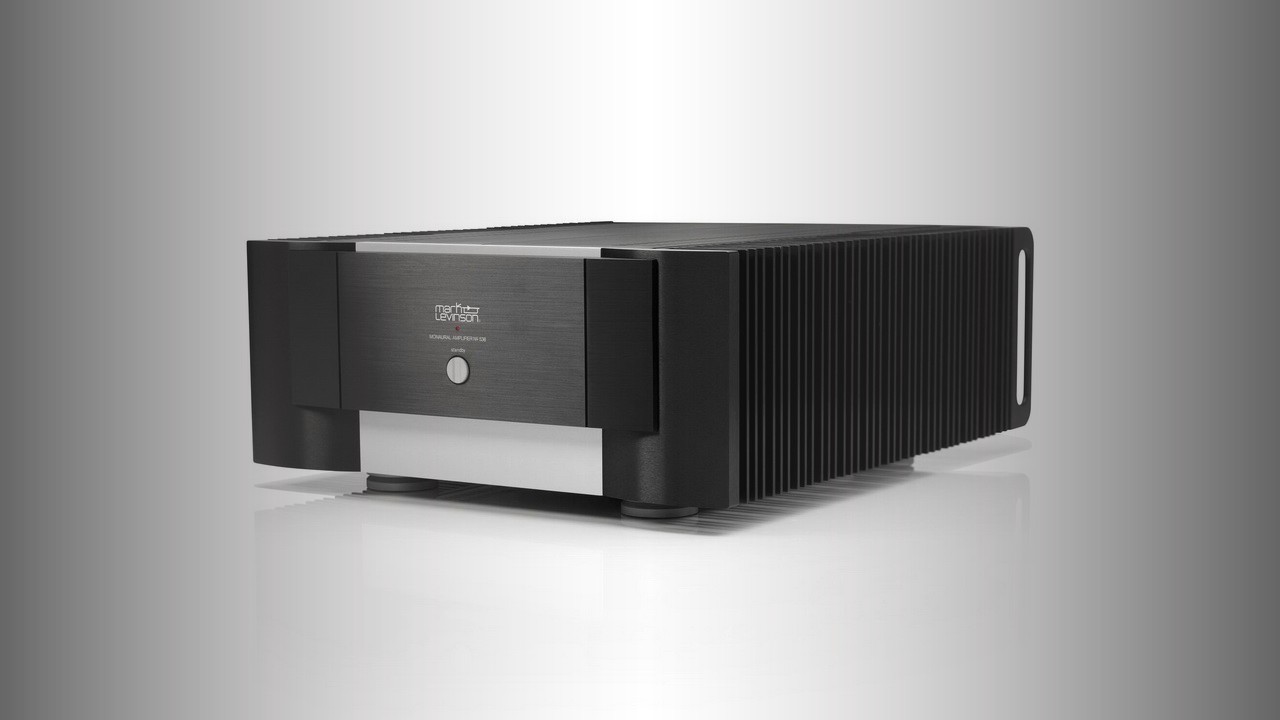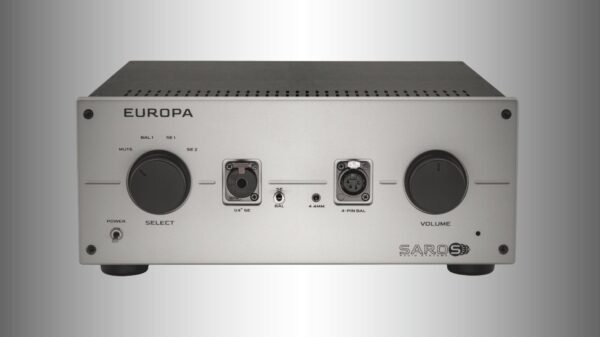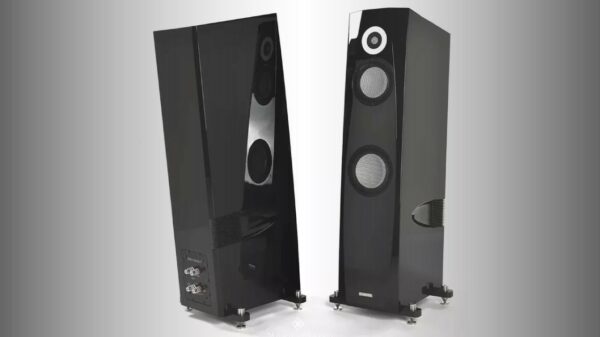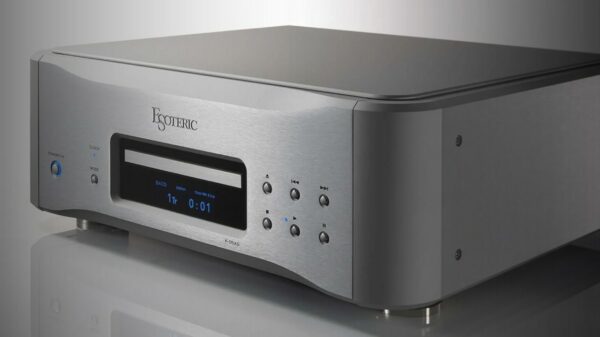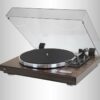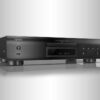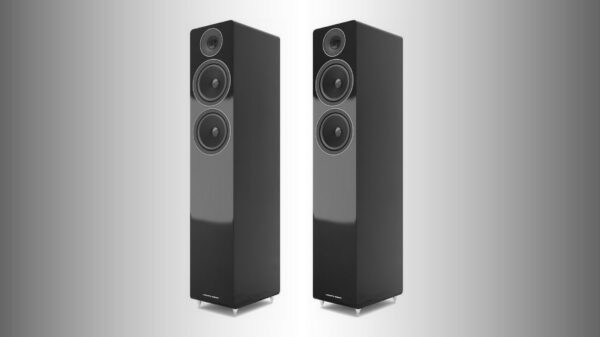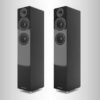The Mark Levinson № 536 is a fully differential, fully discrete mono amplifier featuring Pure Path design that effortlessly drives virtually any loudspeaker while delivering impeccable fidelity, musicality, and openness. The signal path is direct coupled; the design is highly linear with low feedback; the voltage gain and main gain stages operate in Class A mode, while Ethernet, RS-232, and USB connections for monitoring and control provide the integration features required by a modern system. Housed in an extruded 6063-T5 aluminum alloy chassis, the Mark Levinson № 536 features exceptionally high precision assembly to remarkably close tolerances. Housed in a 6000 series aluminum alloy chassis, the № 536, like all Mark Levinson equipment, is designed and hand-assembled in the USA.
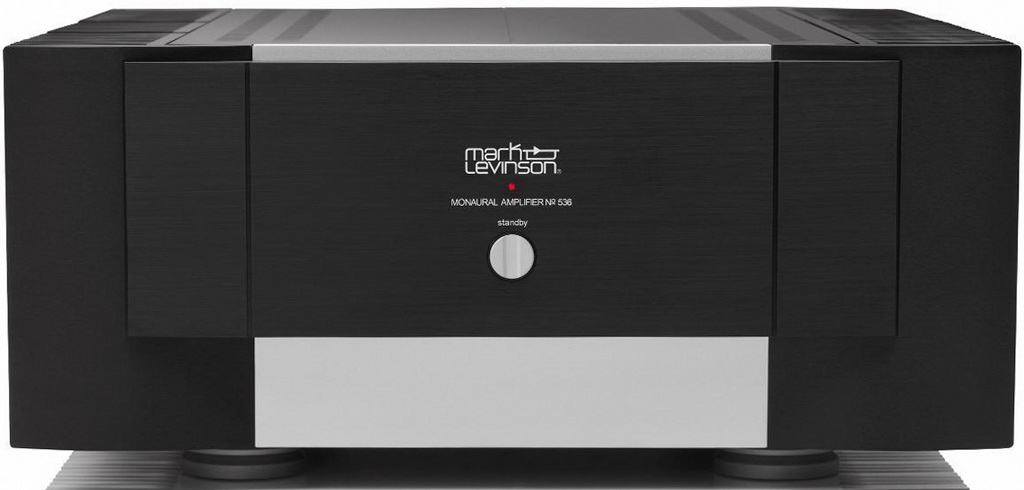
The audio circuit in the Mark Levinson № 536 amplifier is optimized for the best possible open-loop performance. As a result, the need for negative feedback is very low, and its amount can be adjusted to achieve specific measurable or subjectively perceived results. The open-loop gain and bandwidth of the circuit were carefully tuned using precision resistors and compensation capacitors, and then additional precision resistors were used to establish the feedback network.
The Mark Levinson № 536 amplifier features balanced and single-ended inputs, allowing it to be used with virtually any preamplifier or source device with an adjustable output. For secure, tool-free speaker connections, the 536 features two pairs of gold-plated binding posts with Mark Levinson Hurricane locking screws, allowing either standard or bi-wire speaker connections. In the US and other countries outside Europe, cables with banana plugs can be used. System integration is possible via Ethernet/IP networking, RS-232 port, USB connection for web page monitoring and configuration, and 12V triggers.
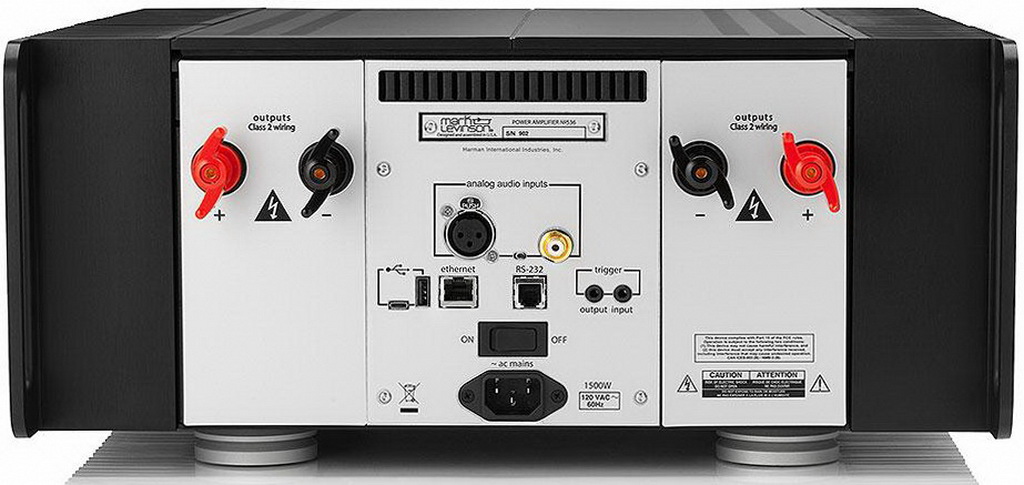
Mark Levinson components are designed around the Pure Path amplifier design concept, which makes extensive use of a circuit design element called a cascode. Cascodes were originally invented to extend the bandwidth of vacuum tube circuits in radios, and Mark Levinson engineers use cascodes in Pure Path designs to both increase the operating frequency range and improve linearity across the entire range. A cascode consists of two transistors combined in such a way that they act as a single composite device, like a single transistor that has the desirable characteristics of each component transistor, but eliminates the undesirable properties of each.
Mark Levinson engineers began designing the gain stage with pairs of junction field-effect transistors (JFETs), chosen for their low noise and high gain. JFETs achieve these benefits in part because of their large size, but their large size also introduces nonlinearity in gain—that is, distortion. To compensate for these, bipolar junction transistors (BJTs) were added to the circuit. BJTs have extremely low input resistance and very high output resistance, which provides excellent bandwidth and linearity. By creating a cascode based on JFETs and BJTs, engineers were able to implement the best characteristics of both types of semiconductor devices in the circuit.
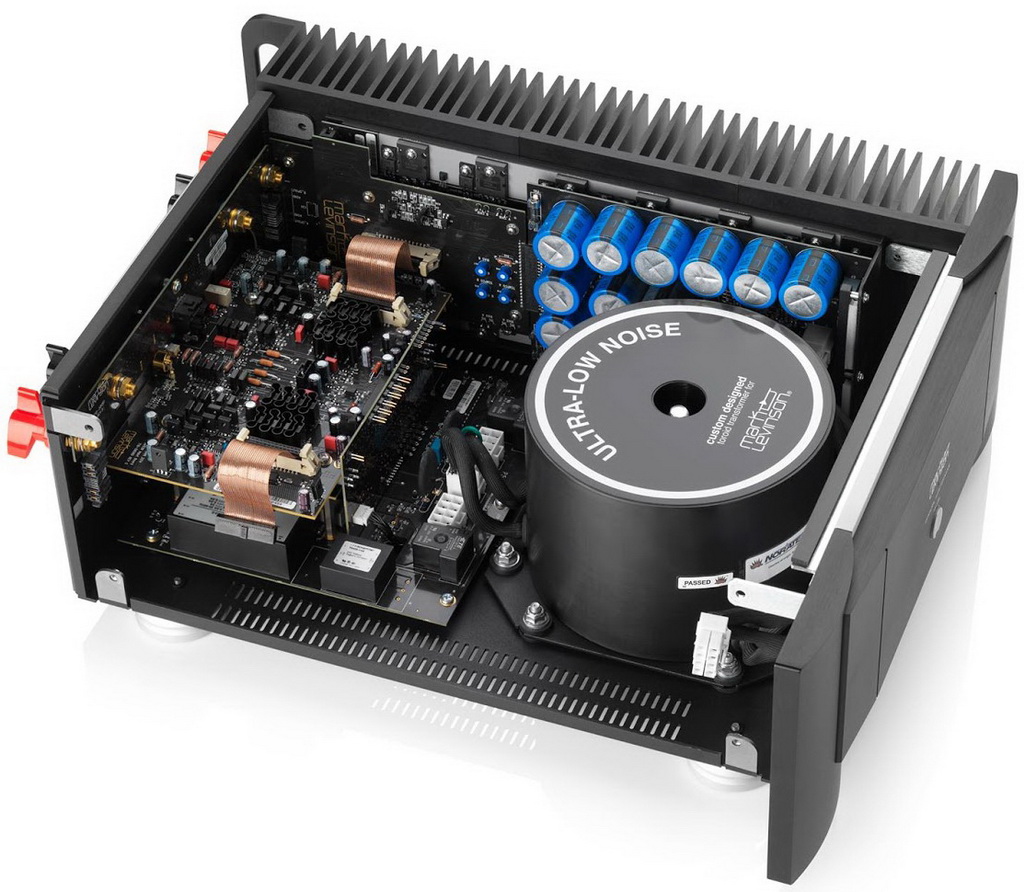
They then connected the output of the cascode to another transistor of the opposite “polarity” (complementary). Current flows through it in the opposite direction, so that the direction of the signal current is “reversed.” This special arrangement is called a folded or broken cascode – and it is a distinctive component of the Pure Path design, which provides high gain with low noise, wide dynamic range and excellent linearity.
Specifications Mark Levinson № 536
Output power 1 x 400 W (8 Ohm, 20 Hz – 20 kHz, THD less than 0.3%), 1 x 800 W (4 Ohm)
Minimum load impedance 2 Ohm
Output voltage slew rate 100 V / μs
Frequency response 10 Hz – 20 kHz (+ 0 / – 0.2 dB)
Signal-to-noise ratio more than 85 dB (2.83 V)
Input impedance 60 kOhm (XLR), 30 kOhm (RCA)
Voltage gain 26 dB
Harmonic distortion less than 0.02% (1 kHz)
Inputs balanced XLR, unbalanced RCA
Other connections RS-232 interface (RJ11), Ethernet port (LAN), USB port (designed for connecting a USB drive with software updates or for importing Configurations), MicroUSB port (used to connect the device to a computer to access the internal web page), Trigger jacks (input/output)
Speaker output 2 pairs of gold-plated screw terminals with Hurricane locking screws
Power supply shielded toroidal transformer (1800 VA), 16 discrete TO-220 high-speed Schottky rectifier diodes (40 A, 250 V), 36 electrolytic filter capacitors, which ultimately provides a capacity of 169200 μF
Transistors discrete bipolar output transistors TO-264, 24 pcs. (15 A, 260 V, 200 W), discrete bipolar transistors TO-220, 24 pcs. (230V, 70MHz, one for each output transistor)
Power consumption 350W (power on, no signal), 65W (standby), 5W (low power standby), less than 0.5W (eco standby)
Dimensions (WxDxH) 438x197x533mm
Weight 45.4kg




